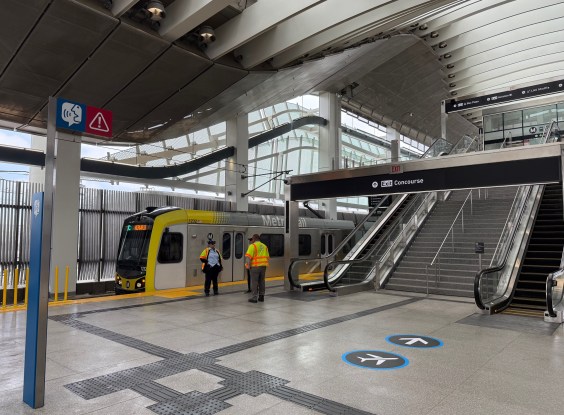- Pre-pandemic traffic is back, and now every hour is rush hour. (City Lab)
- Transportation accounts for 29 percent of greenhouse gas emissions, the majority from personal vehicles. To prevent climate change, people need to drive less. More density, congestion pricing and redesigning streets can get people out of their cars. (RMI)
- Grist interviews author Tom Standage, whose new book "A Brief History of Motion: From the Wheel, to the Car, to What Comes Next" shows that an auto-dominated society is not inevitable.
- With transportation being the largest source of greenhouse gases, it's time for the U.S. to get onboard with high-speed rail. (Greenbiz)
- Cities that turned street space over to people during the pandemic are now, unfortunately, giving it back to cars. (Quartz)
- Transit ridership is recovering, but some riders say they'll drive more in the future, often because the nearest stop is too far away from their home. (TransLoc)
- Commuter rail ridership dropped the most during the pandemic, and systems are lowering fares and integrating with other services to draw more riders. (Government Technology)
- Funding for bike lanes and trails and bike-share stations creates jobs. (Streetsblog USA)
- Transit Center says the U.S. DOT should set standards and metrics for equity.
- Uber and Lyft's survival depends on their ability to exploit drivers. (San Francisco Examiner)
- The Houston Metro is moving forward with plans for bus rapid transit lines despite the loss of revenue during the pandemic. (Chronicle)
- Charlotte's new streetcar is scheduled to open Monday, just a day before a federal deadline. (WSOC)
- Wayne State University in Detroit is subsidizing free bus, streetcar and bike-share passes for students, faculty and staff.
Streetsblog
Friday’s Headlines Are Stuck in Traffic
Stay in touch
Sign up for our free newsletter
More from Streetsblog USA
Everything You Need To Know About Zohran Mamdani — From the Pages of Streetsblog
Our New York team offers you the transportation policy highlights of Mayor-elect Zohran Mamdani's improbable 2025 run for City Hall.
Wednesday’s Headlines Want to Age in Place
American cities aren't particularly friendly to seniors who can no longer drive, fueling isolation and loneliness.
Some Stories That Shaped L.A. in 2025
And from the Left Coast, let's get a year-in-review, California-style.
Year in Review: What Gave Us Hope in a Dark 2025
Yes, this year was tough. Yes: we're still ending it with hope for the future.
Tuesday’s Headlines Pay Your Own Way
The Trump administration pulled $4 billion in grants for high-speed rail, and now California doesn't want it back.





